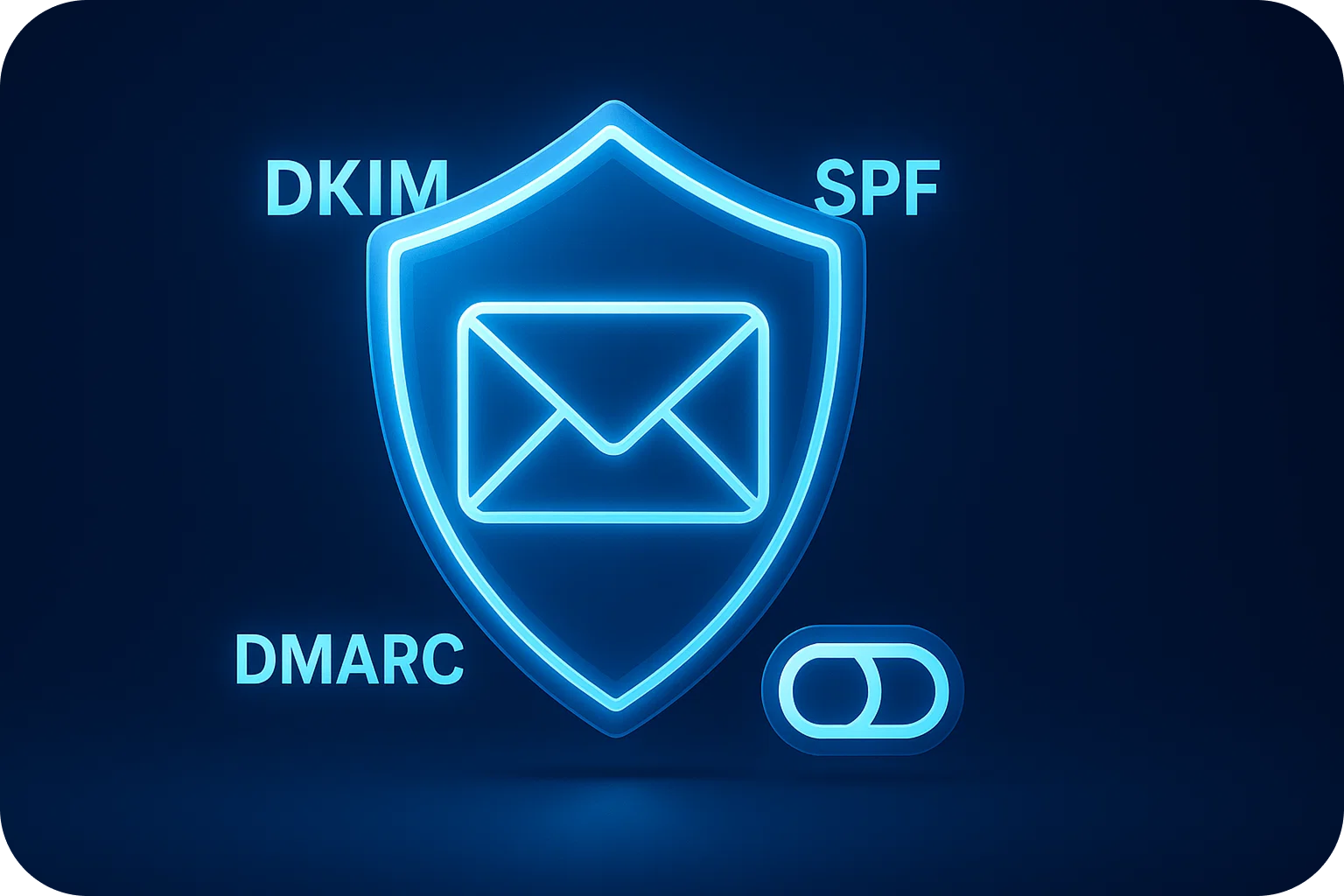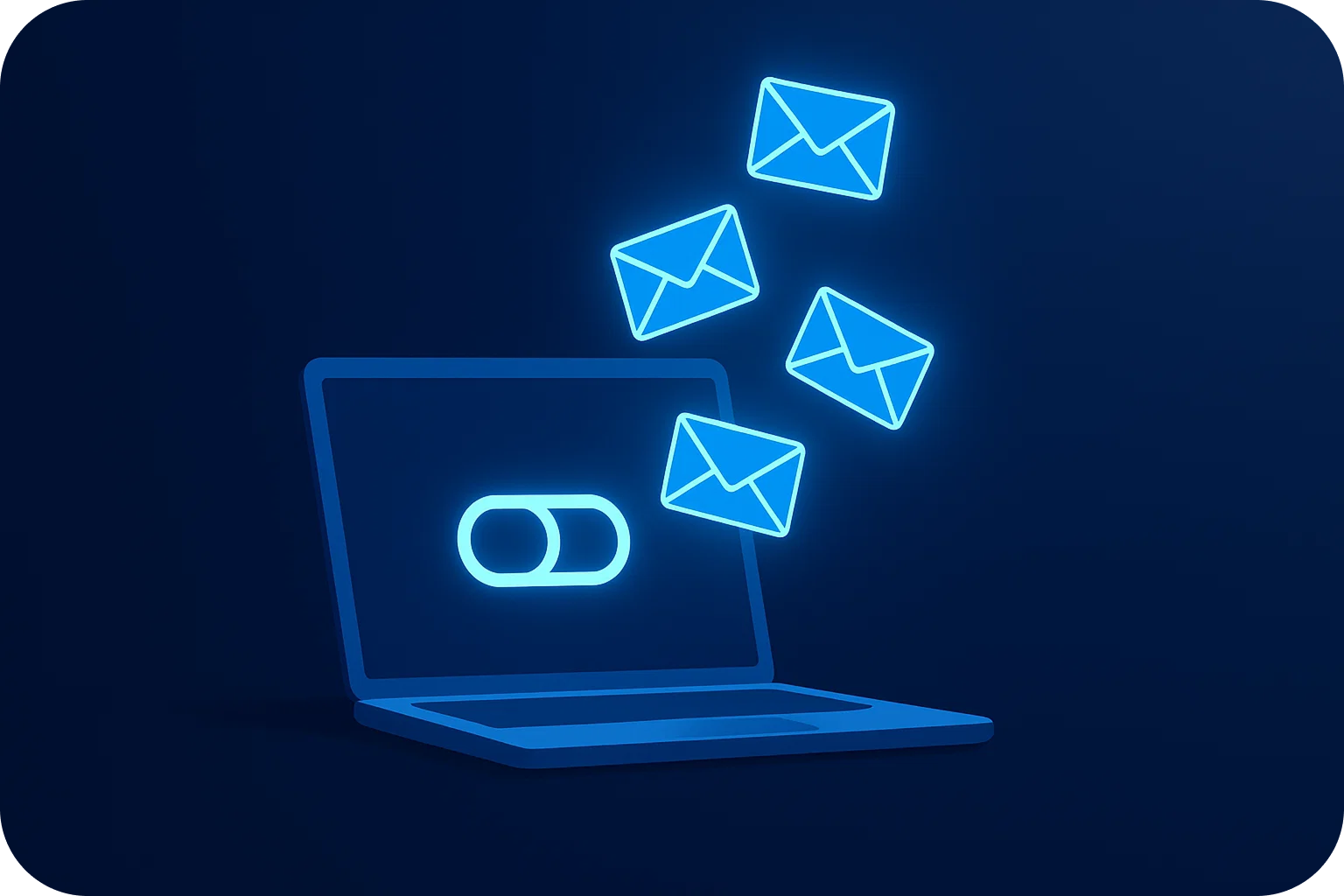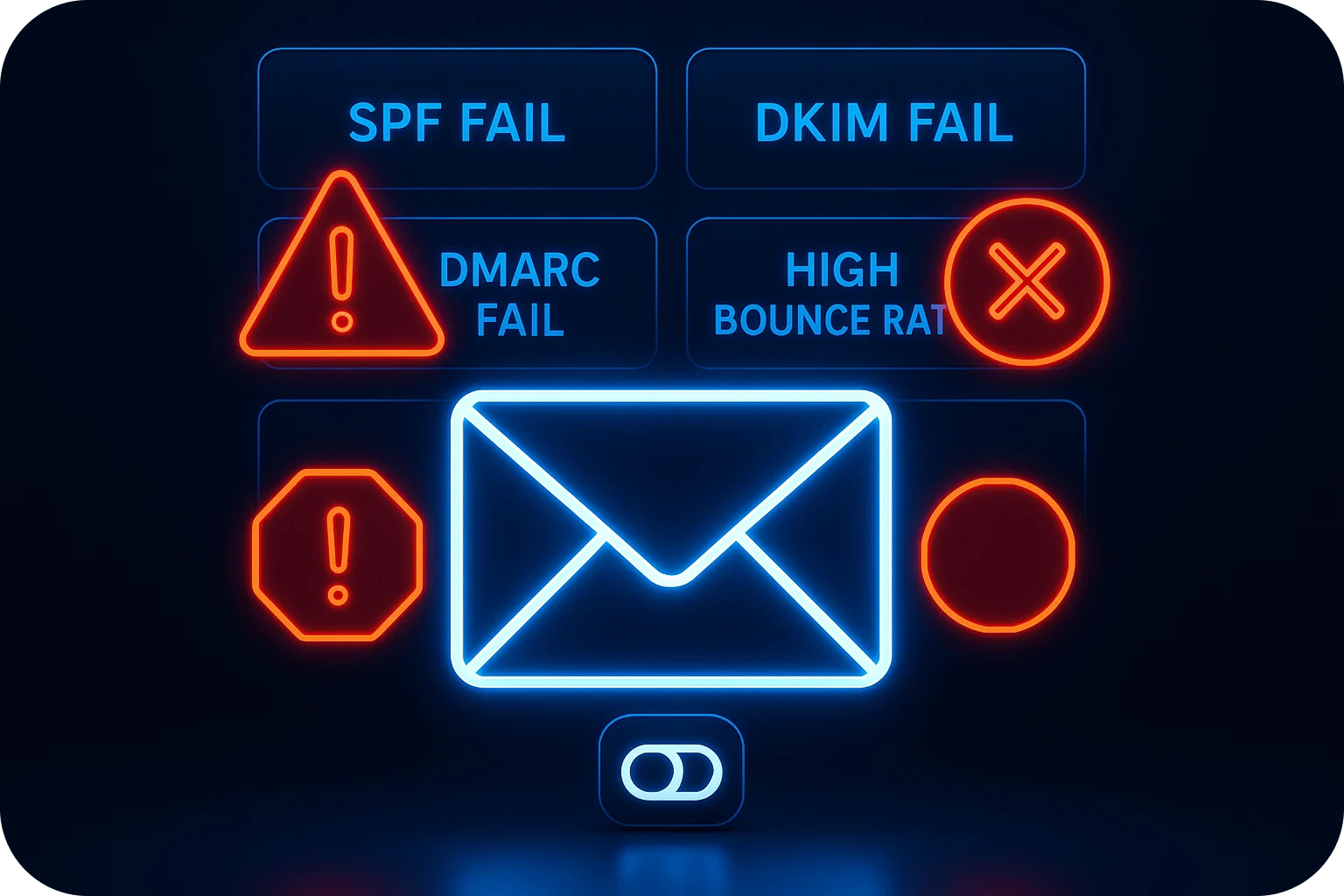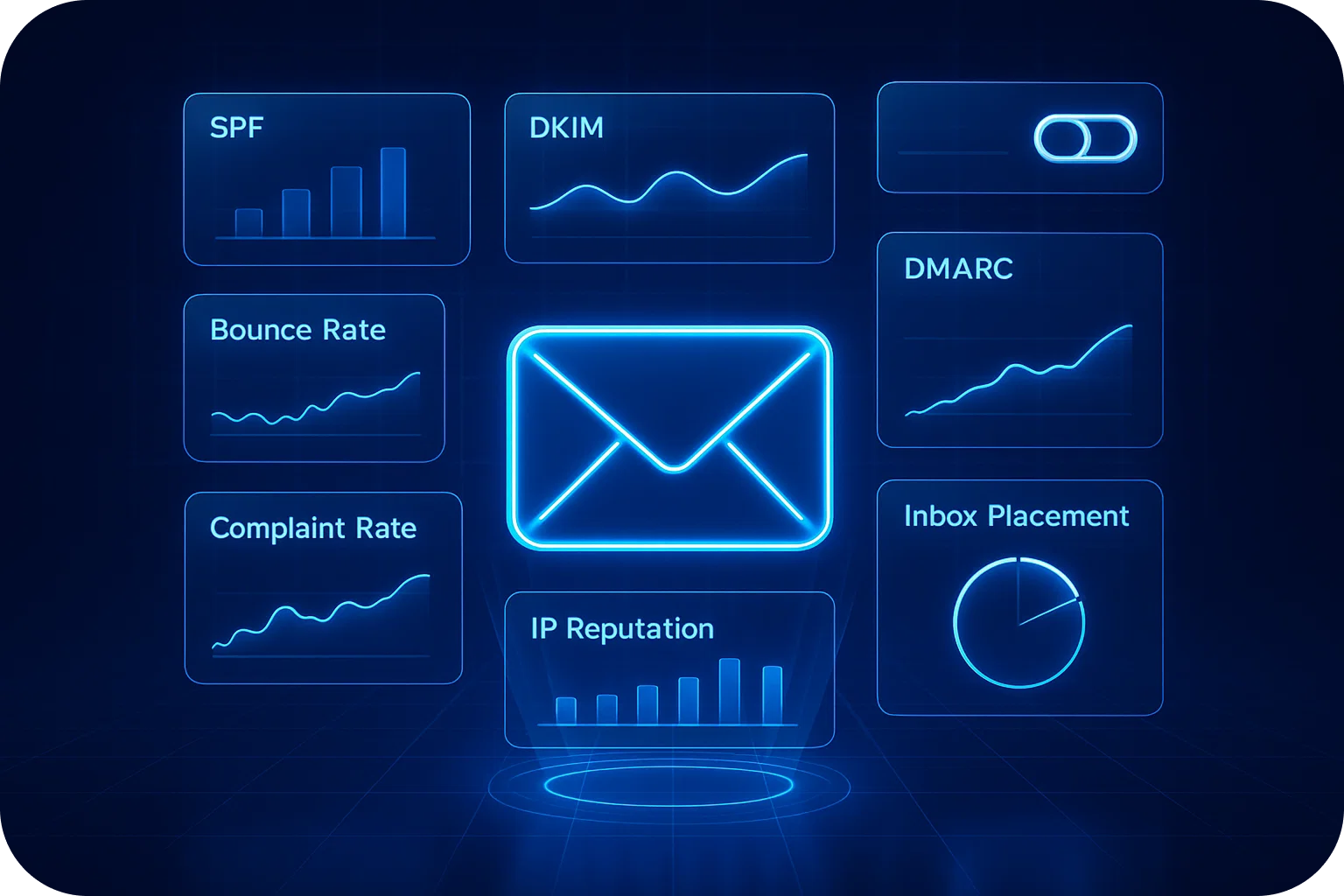The Unsubscribe Paradox: Why Making It Easy Actually Improves Deliverability

It sounds counterintuitive: making it easier for people to leave your email list actually helps you reach more inboxes. Yet this "unsubscribe paradox" is one of the most misunderstood principles in cold email outreach.
Many sales teams and startups treat unsubscribe links like necessary evils, burying them in tiny text at the bottom of emails, making the process complicated, or worse, omitting them entirely. The logic seems sound: fewer unsubscribe options means more people stay on your list, right?
Wrong. Dead wrong.
In reality, a prominent, friction-free unsubscribe process is one of your most powerful tools for protecting sender reputation and maintaining the 96-98% inbox placement rates that successful cold email campaigns require.
The Real Cost of Hidden Unsubscribe Links
When recipients can't easily unsubscribe from your emails, they don't just accept their fate and keep reading. They take action, just not the action you want.
Here's what actually happens when you make unsubscribing difficult:
- Spam complaints skyrocket: Unable to find an unsubscribe link, frustrated recipients hit the "Report Spam" button instead. This is devastating for your sender reputation.
- Email providers take notice: Gmail, Outlook, and other providers track complaint rates meticulously. Even a 0.1% complaint rate can trigger deliverability issues.
- Your entire domain suffers: Spam complaints don't just affect individual email accounts, they damage your domain reputation, impacting every inbox sending from that domain.
- Engagement metrics plummet: Uninterested recipients who can't leave simply stop opening your emails, signaling to providers that your content is unwanted.
The math is brutal: one spam complaint does roughly 100 times more damage to your sender reputation than one unsubscribe. Yet many senders optimize for the wrong metric.
Why Email Providers Reward Easy Unsubscribes
Gmail, Microsoft, and other email providers have a singular mission:to protect their users from unwanted email. They've built sophisticated algorithms that evaluate sender behavior, and your unsubscribe process is a key signal.
Providers look at the ratio between unsubscribe requests and spam complaints. A healthy sender has a high unsubscribe-to-complaint ratio, meaning recipients use the proper channel to opt out rather than reporting spam.
When you make unsubscribing easy, you're essentially telling email providers: "We respect recipient preferences and provide legitimate exit options." This builds trust with the gatekeepers who control inbox access.
Consider these provider-specific factors:
- Gmail's List-Unsubscribe header: Gmail displays a prominent unsubscribe link at the top of emails that properly implement the List-Unsubscribe header. This one-click option is convenient for users and signals legitimacy to Gmail.
- Microsoft's complaint feedback loops: Outlook actively monitors complaint rates and provides feedback to senders. High complaint rates trigger aggressive filtering.
The Psychology of Permission-Based Marketing
Beyond the technical deliverability benefits, easy unsubscribes reflect a fundamental shift in how effective cold email works in 2025.
Cold email isn't about forcing your message on as many people as possible. It's about finding the right people, those who actually want to hear from you, and building relationships with them.
An easy unsubscribe process serves as a self-selection mechanism. People who opt out weren't going to convert anyway. They were just cluttering your list, dragging down your engagement rates, and increasing the risk of spam complaints.
Meanwhile, those who stay are genuinely interested. They're the prospects worth your time and attention. They'll open your emails, engage with your content, and eventually convert at much higher rates than a bloated list of disinterested contacts.
Best Practices for Unsubscribe Implementation
Implementing an effective unsubscribe process isn't complicated, but it requires intentionality. Here's how to do it right:
1. Make It Visible
Your unsubscribe link should be easy to find, typically in the footer of your email in a readable font size. Don't use 6-point gray text on a gray background. That's not just bad practice; it violates CAN-SPAM regulations.
2. Implement List-Unsubscribe Headers
The List-Unsubscribe header is a technical implementation that allows email clients to display a native unsubscribe option. This is especially important for Gmail, which shows an "Unsubscribe" link next to your sender name when this header is present.
There are two versions:
- List-Unsubscribe: Provides a mailto link or HTTP URL for unsubscribing
- List-Unsubscribe-Post: Enables true one-click unsubscribe functionality
Implementing both provides the best user experience and strongest deliverability signal.
3. Keep It Simple
The unsubscribe process should require one click, two at most. Don't force users to log in, answer surveys, or navigate through multiple pages. Every additional step increases the likelihood they'll report spam instead.
4. Process Requests Immediately
When someone unsubscribes, remove them from your sending list within 24 hours (preferably immediately). Continuing to email someone who's opted out is not only annoying, it's illegal under CAN-SPAM and GDPR.
5. Confirm the Unsubscribe
Show a clear confirmation message after someone unsubscribes. This provides closure and prevents repeated unsubscribe attempts or spam reports from confused users.
6. Honor Preferences Across All Campaigns
If someone unsubscribes from one campaign, respect that preference across all your outreach. Don't add them back to different lists or campaigns. This is a fast track to spam complaints and potential legal issues.
The Compliance Advantage
Easy unsubscribes aren't just good for deliverability, they're legally required in most jurisdictions.
The CAN-SPAM Act in the United States requires that commercial emails include a clear unsubscribe mechanism and honor opt-out requests within 10 business days. Violations can result in penalties up to $46,517 per email.
GDPR in Europe is even stricter, requiring explicit consent for email marketing and easy opt-out mechanisms. Non-compliance can result in fines up to €20 million or 4% of annual global turnover, whichever is higher.
CCPA in California provides similar protections for California residents.
By implementing a robust, user-friendly unsubscribe process, you're not just protecting your deliverability; you're protecting your business from significant legal and financial risk.
Measuring the Impact
How do you know if your unsubscribe strategy is working? Track these key metrics:
- Complaint rate: Should be below 0.1%. If it's higher, your unsubscribe process may be too difficult.
- Unsubscribe rate: Typically 0.5-2% per campaign. Higher isn't necessarily bad—it means people are using the proper channel.
- Unsubscribe-to-complaint ratio: Should be at least 10:1, ideally much higher.
- Inbox placement rate: Should remain at 96-98% or higher with proper unsubscribe implementation.
- Engagement rate: Open and click rates should improve as uninterested recipients self-select out.
Monitor these metrics across your domains and email accounts. If you're managing multiple domains (most cold email senders manage 5-10), track performance at both the domain and account level to identify issues quickly.
Common Objections (And Why They're Wrong)
"But I'll lose potential customers!"
You're not losing potential customers, you're losing people who were never going to buy. The recipients who unsubscribe weren't engaged with your content. Keeping them on your list only hurts your metrics and deliverability.
"My list will shrink too fast!"
A smaller, engaged list outperforms a large, disengaged list every time. Focus on list quality, not quantity. The prospects who stay are worth 10x those who leave.
"Competitors hide their unsubscribe links and seem fine!"
You're seeing survivorship bias. For every sender who gets away with hidden unsubscribe links, dozens are quietly filtered to spam. Don't optimize for short-term gains that risk long-term deliverability.
The Infrastructure Advantage
Implementing proper unsubscribe functionality requires solid email infrastructure. This is where many startups and sales teams struggle.
Managing unsubscribe lists across multiple domains and email accounts, implementing proper headers, and ensuring compliance at scale requires technical expertise and robust systems.
Modern cold email infrastructure platforms handle these complexities automatically, implementing List-Unsubscribe headers, processing opt-outs instantly across all domains, and maintaining compliance with global regulations. This allows sales teams to focus on crafting compelling messages rather than wrestling with technical implementation.
When you're sending from 5-10 domains with multiple inboxes per domain (the recommended approach for scaling cold outreach), manual unsubscribe management becomes impossible.
Automated infrastructure ensures consistent, compliant handling across your entire sending ecosystem.
The Long Game
Email deliverability is a long-term game. The decisions you make today about unsubscribe implementation will impact your sender reputation for months or years to come.
Every spam complaint is a black mark that's difficult to erase. Every frustrated recipient who can't find your unsubscribe link is a potential complaint waiting to happen.
Conversely, every smooth unsubscribe experience is a small deposit in your sender reputation bank. Over time, these deposits compound, building the trust with email providers that translates to consistent inbox placement.
The most successful cold email senders understand this paradox: the easier you make it for people to leave, the more people you'll ultimately reach.
Taking Action
Ready to optimize your unsubscribe process? Start with these immediate steps:
- Audit your current emails—can you find the unsubscribe link within 3 seconds?
- Implement List-Unsubscribe and List-Unsubscribe-Post headers on all outbound emails
- Test your unsubscribe process—does it work in one click?
- Review your complaint and unsubscribe metrics—what's your current ratio?
- Set up automated unsubscribe processing across all your domains and accounts
- Document your unsubscribe process for compliance purposes
Remember: in cold email, less is often more. A smaller list of engaged prospects who actually want to hear from you will always outperform a bloated list of disinterested contacts.
The unsubscribe paradox isn't really a paradox at all. It's a fundamental truth of permission-based marketing: respect generates results. Make it easy for people to leave, and you'll build the reputation that keeps you in the inbox for those who want to stay.
Your deliverability and your bottom line will thank you.
More articles
Get started now




%201.png)





